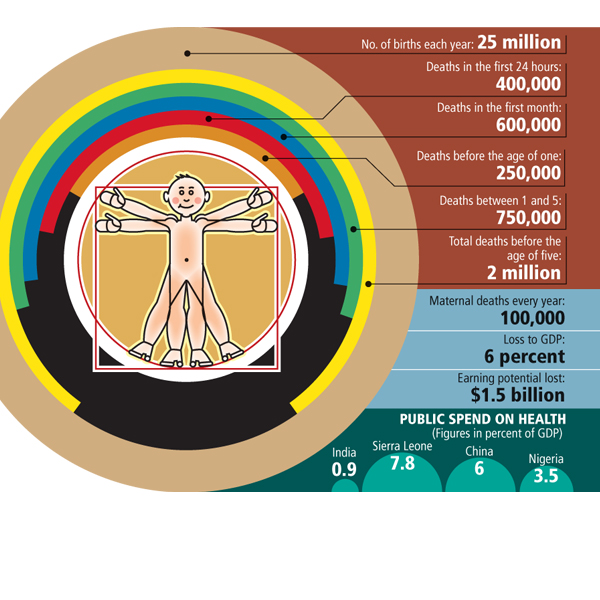
The Five-Year Hurdle
Are we willing to pay the price of child mortality?
Shabbir Ahmed died in early November in a government hospital in Mumbai. You wouldn’t have heard of him. He wasn’t someone well known. Born into a poor family, he was nine months old when pneumonia claimed him. Two million children like Shabbir die in India before they reach the age of five years. Child mortality rates in India, 72 per thousand live births, are higher than those in Bangladesh (61) and war-torn Sri Lanka (21). And for good measure, India also accounts for one-fifth of newborn deaths globally.
Contrast this with the international figures. According to medical journal The Lancet, 50 percent of the children born in the developed world today will live to 100. Though the life that Shabbir may have lived will only exist in the world of conjectures, the economic impact of a life extinguished so early is much more definite.

In Shabbir’s death we do not know if the nation lost a lawyer, doctor, scientist or an entrepreneur and the pillar to a family. This tragic loss is immeasurable. But even if Shabbir had been a moderately paid casual labourer, he would have been worth Rs. 16.5 lakh by the time he was 65 years old. Back of the envelope calculations show that if you take into account that a poor person enters the workforce at age 15 and works until 65 he is worth Rs. 16.5 lakh (after taking into account money spent on nutrition and basic education till he is 15).
Thomas Chandy, CEO, Save the Children says, “Child mortality causes a loss of around 6 percent of the country’s GDP.” Reports by the World Health Organization estimate that the losses total up to $15 billion a year globally.
So what can be done to remedy the situation? “Investments in the health and nutrition space have to increase,” says a health professional who works with Unicef. India spends less than 1 percent of its GDP (0.9 percent) on public health. “Another problem is that the programme capacity management at the national and state levels is extremely constrained,”
he says.
“Government (rural) schemes are well funded but there is ineffective distribution,” elaborates Chandy from Save the Children. “People don’t know where they can get access.”
Slum children in India are particularly vulnerable. The National Rural Health Mission health clinics are a sure stop for villagers. In cities, government hospitals are over-worked, under-funded and ill-equipped. Maternal care is not up to the mark either. One lakh women die during childbirth every year.
Access to services has to improve. he lack of coordination has to be corrected. There are many programmes like he National Rural Health Mission, Integrated Child Development Services, and the Reproductive and Child Health Programme, all operating on separate levels. They need to converge at the ground level.
(This story appears in the 04 December, 2009 issue of Forbes India. To visit our Archives, click here.)
Post Your Comment














